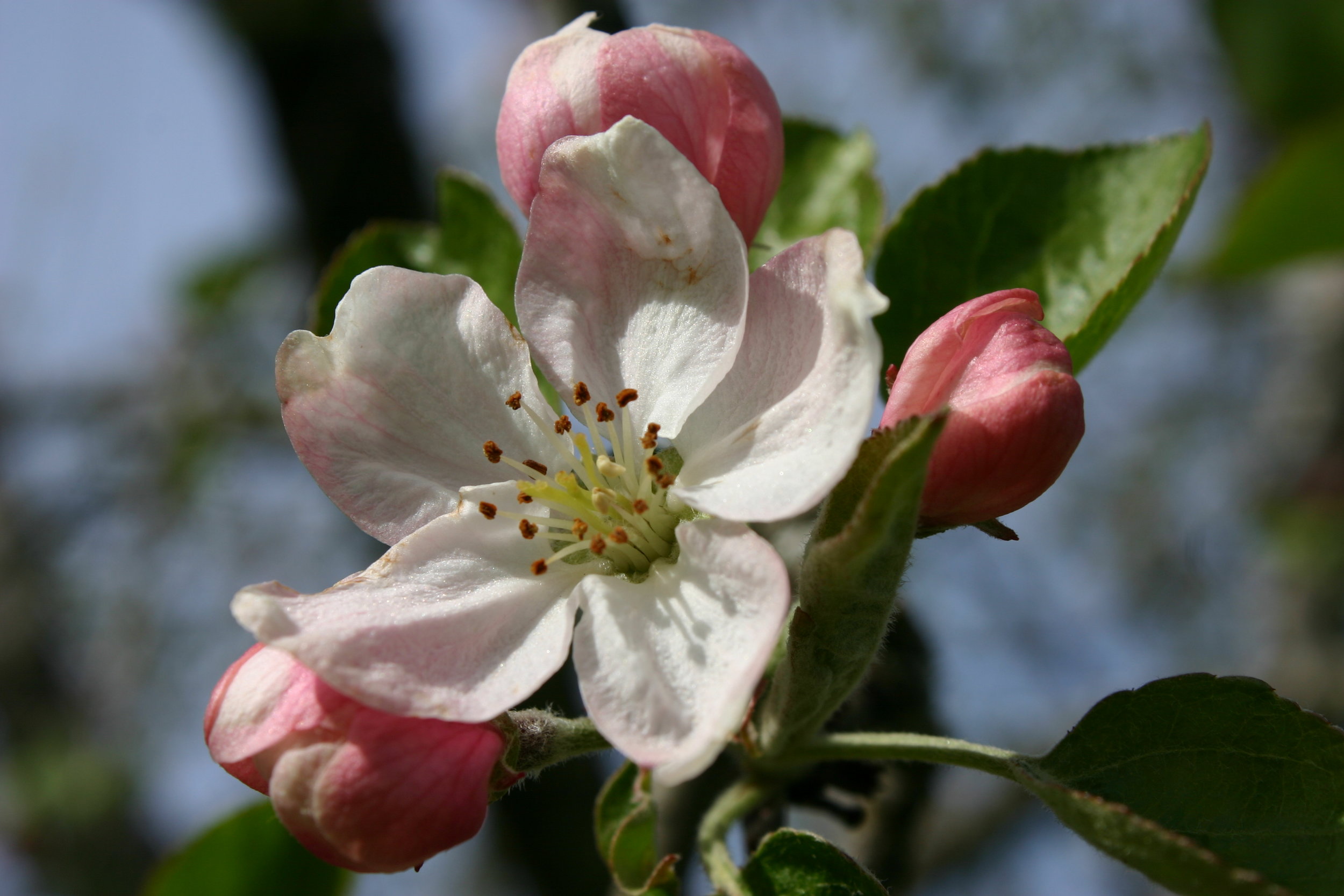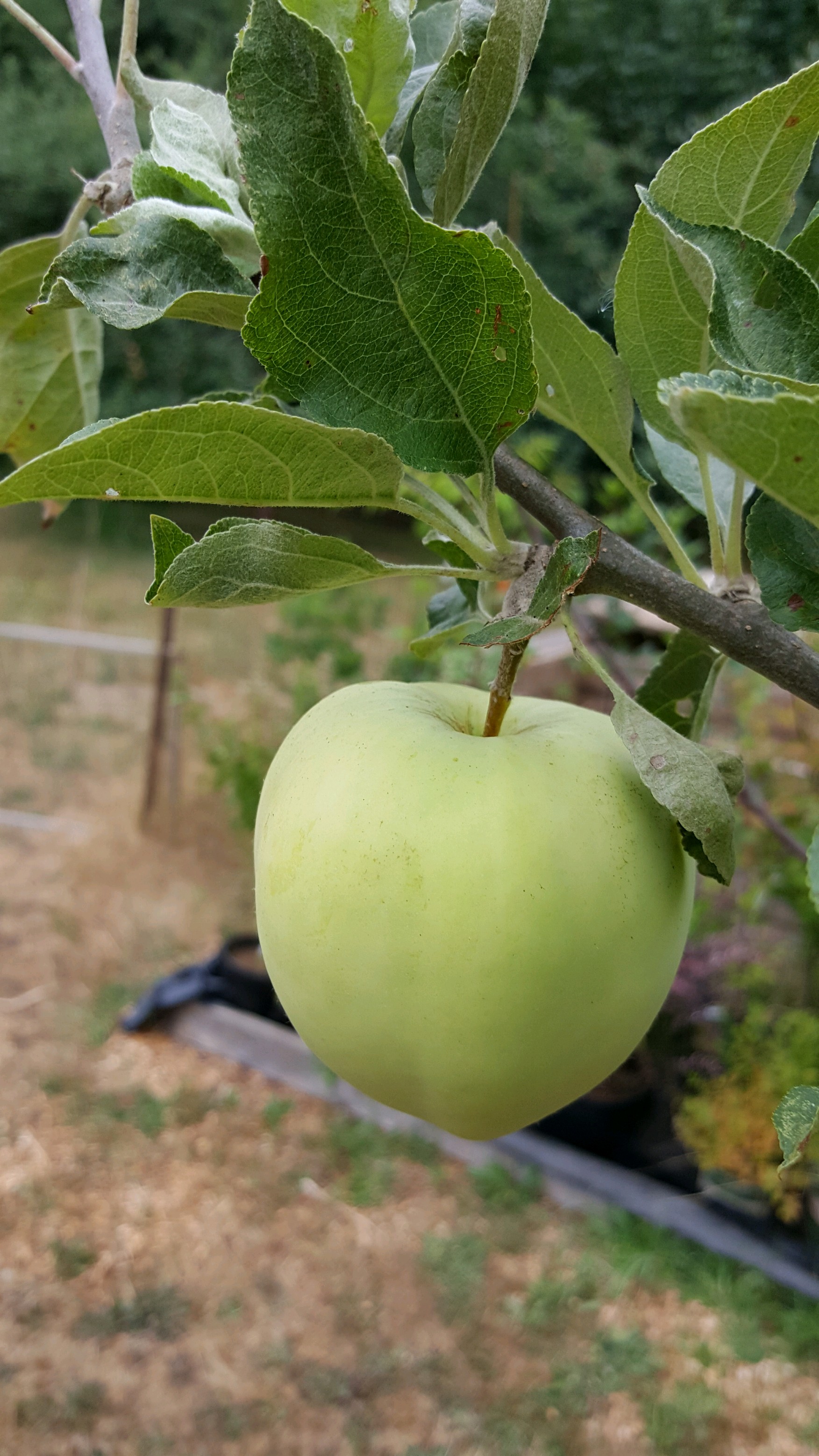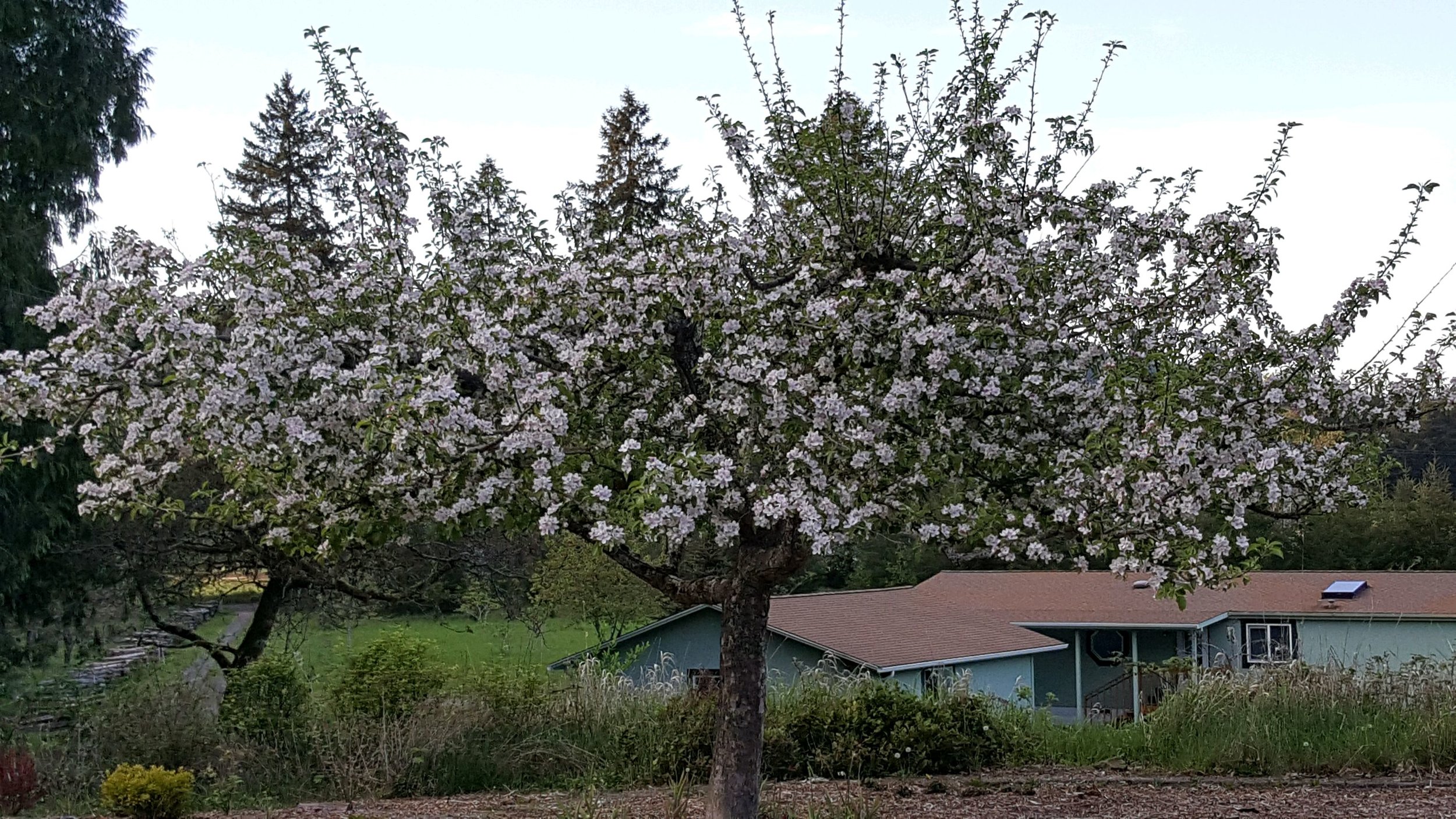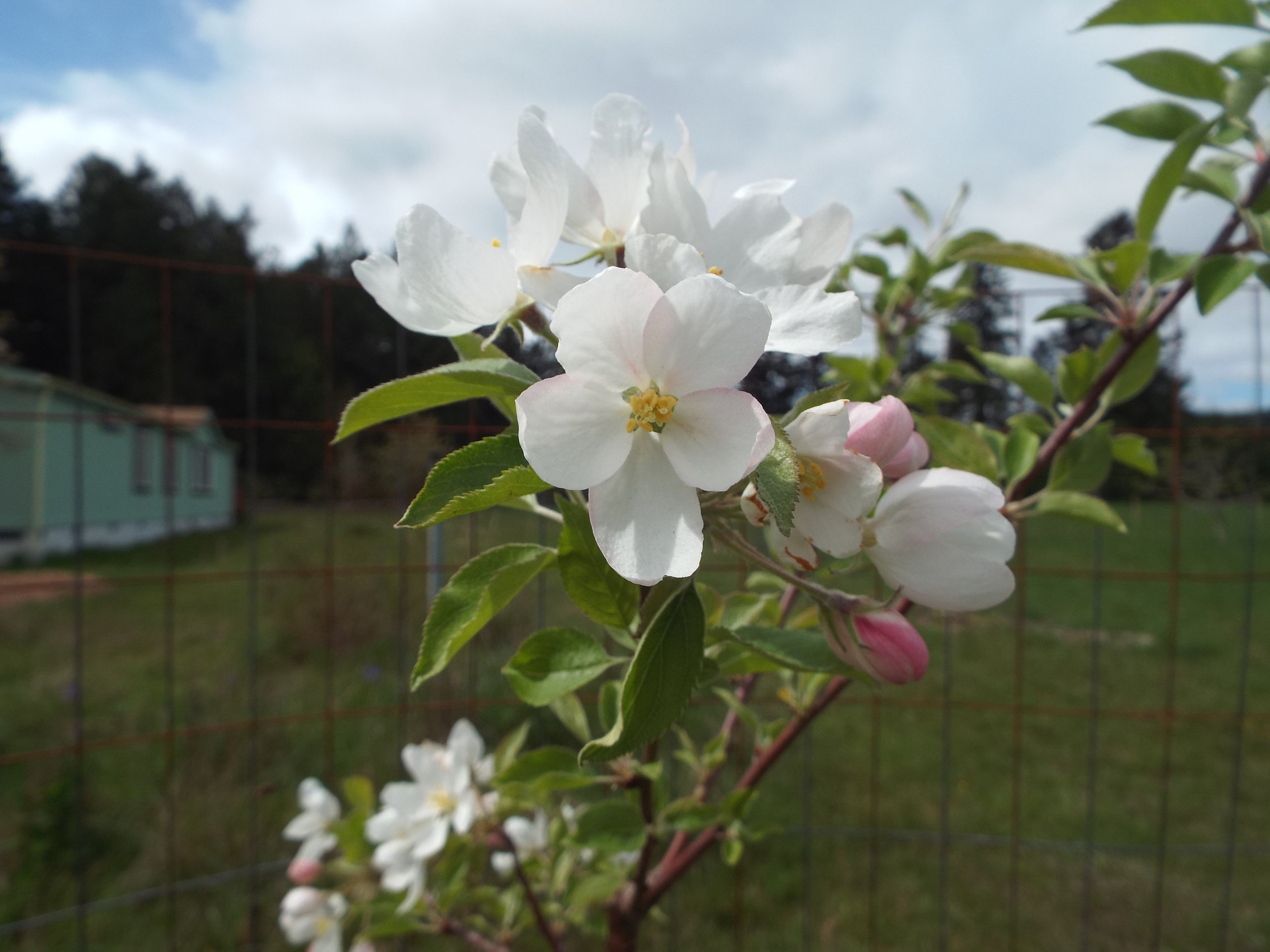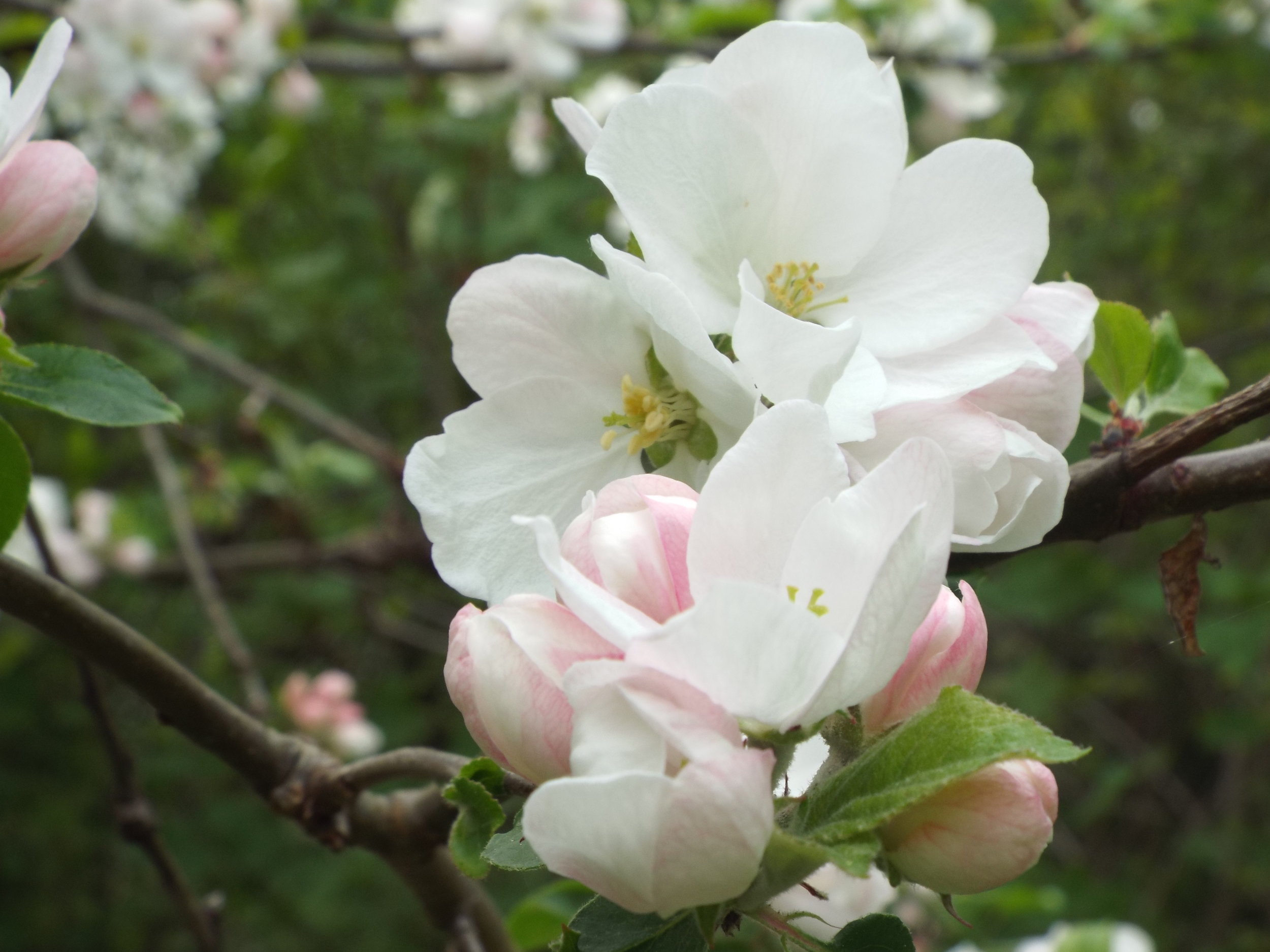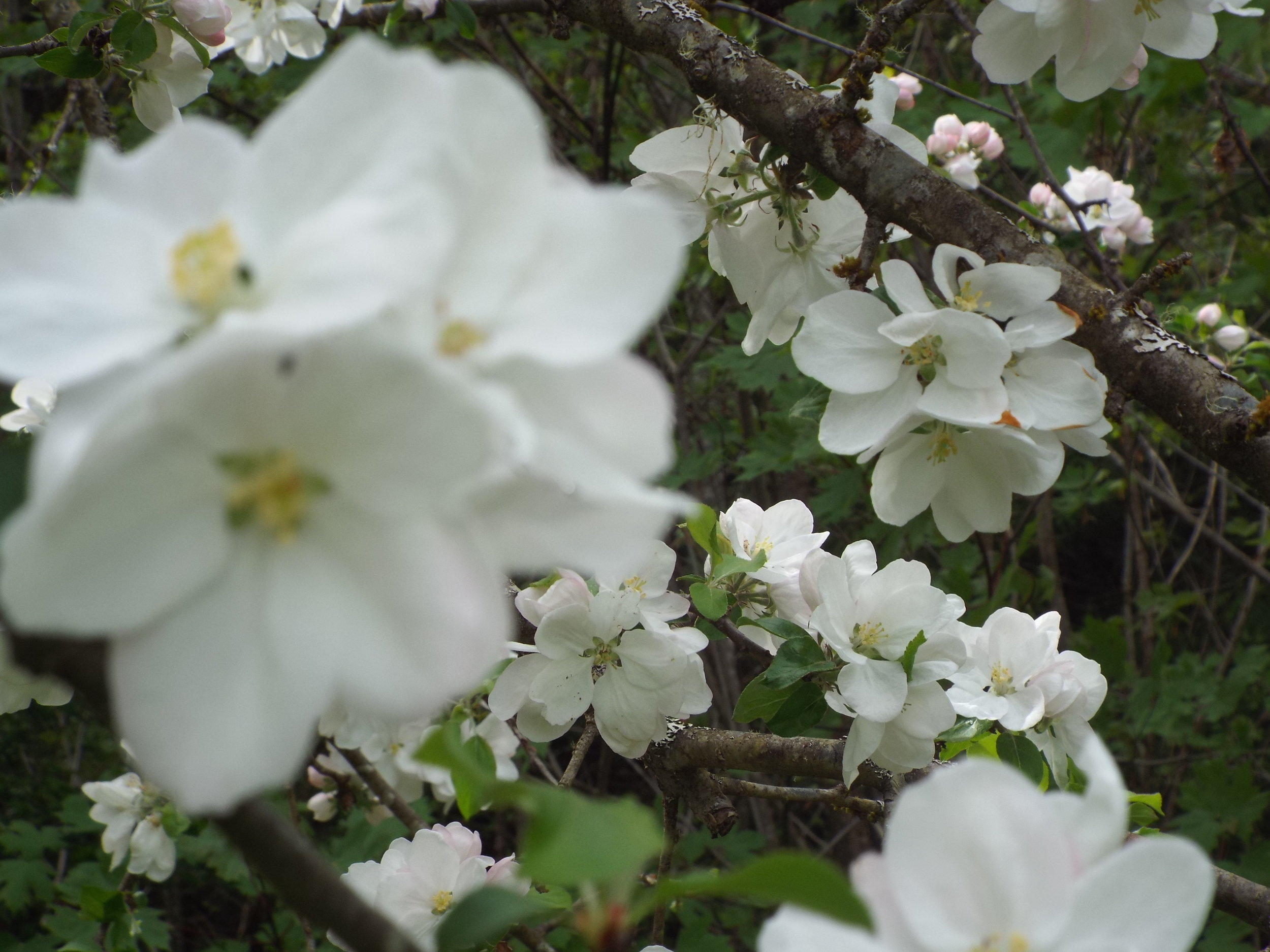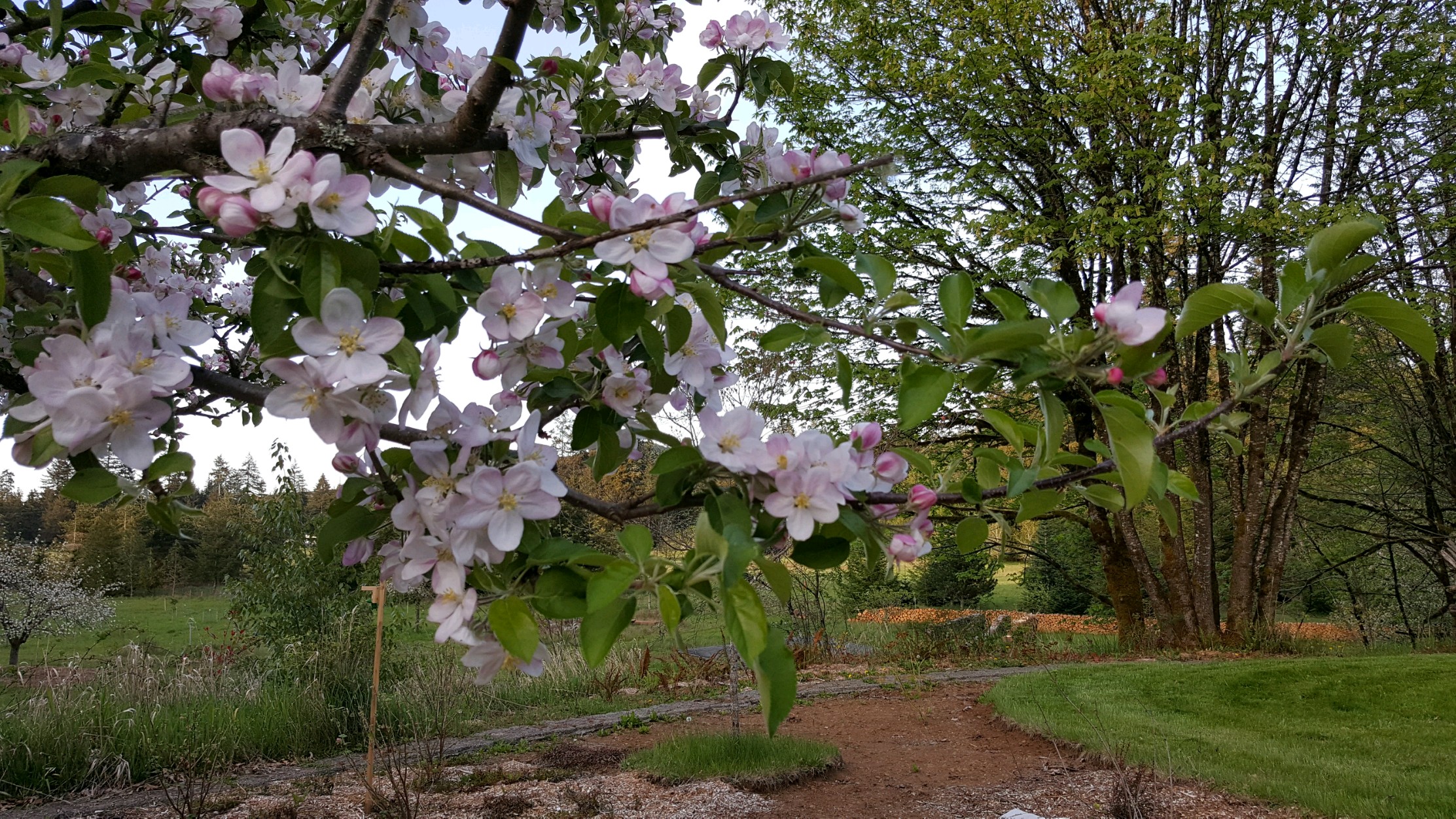Apple trees are great additions to any yard or garden, providing a source of food for bees, birds, wildlife and us! There’s nothing like the joy of watching your tree bloom in the spring, expectantly waiting for the fruit to ripen, and finally eating an apple freshly picked off your tree.
Pollination Basics
The topic of pollination can be confusing, so let’s review the basics. Honeybees, mason bees, and bumblebees are the main pollinators of apples. The smell and color of the flower signals to bees there is tasty nectar waiting inside. When a bee visits a flower, pollen sticks to their hair and is carried to the next flower.
photo: Andrea Watts
Apple Pollinator Partners
When exploring and researching apple varieties, a common term you might come across is cross-pollination. For example, you might see a description that states: “the Beni Shogun apple variety requires cross-pollination to produce fruit.” This means a Beni Shogun apple flower needs pollen from flowers of a different apple variety in order to produce fruit. Cross-pollination is helpful for the tree by ensuring the greatest genetic diversity in seeds (that may become future trees). Without an appropriate pollinator partner tree (and bees) a lonely apple tree will produce little to no fruit at all.
Since bees fly between trees, it’s also important to consider the spacing between your apple trees. Plant them too far apart and bees can’t reach the pollinator partners! For pollination purposes, the recommended planting distance for apple trees is within a 100 foot distance.
To summarize, nearly all apple varieties need to be cross-pollinated with pollen from the flowers of a different apple variety to produce fruit. For example, Honeycrisp can be pollinated by Pink Lady, but not by another Honeycrisp.
Bloom Periods
There are many varieties of apples and they don’t all bloom at once. Apple varieties are categorized according to when they flower in the spring and there are five categories of bloom periods:
early season
early-mid season
mid-season
mid-late season
late season.
It’s important to know which apple varieties can be pollinator partners, meaning the blossoms are fully open at the same time so bees can effectively pollinate.
So how do you know which apple varieties are pollinator partners? One way to remember is apple varieties in a bloom period can be pollinator partners with other varieties within the same period, as well as periods blooming right before and after. For example, Zestar, an early-spring-blooming variety can pollinate William’s Pride, also an early bloomer. Zestar can also pollinate Chehalis apple, which is in the early-mid-season category. This principle is true for all bloom periods.
Other Considerations
Now that we understand pollination partners and blooming periods there is an extra caveat to consider. Some apple varieties cannot pollinate at all; their pollen is sterile. Jonagold, Ashmead’s Kernel, Bramley Seedling and Gravenstein are called triploid because these varieties contain an extra set of chromosomes. The extra chromosomes renders the flower pollen sterile so these varieties can’t be relied upon as pollinator partners. If planting a triploid variety such as Jonagold, be sure to have 2 other apple varieties as pollinator partners to ensure fruit in the fall.
Combo Apples
In a small garden there may not be room for two apple trees, much less three if one variety is a triploid, but fear not, for you can plant combo apples! Combo apples, also known as combination apple trees, have different varieties of apple grafted onto a single tree. The different varieties can pollinate each other, so you only need one tree. This is especially useful for small-space gardening!
Apples are great fruit trees to plant in your yard; with a variety of uses from fresh eating to apple sauce, apple pie, apple cider, apple cider vinegar, and the list goes on.
We would love to help you pick out and care for your new apple tree! Reach out to us in person or through social media using #heyswansons with any questions.


